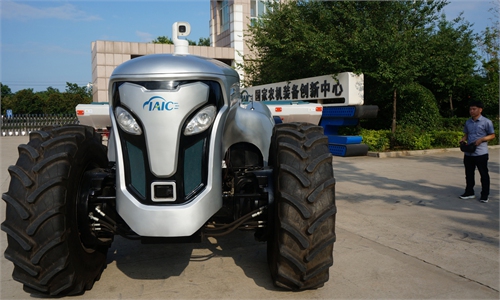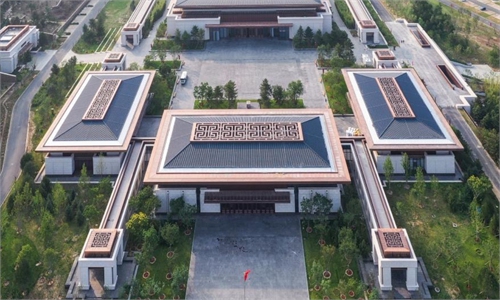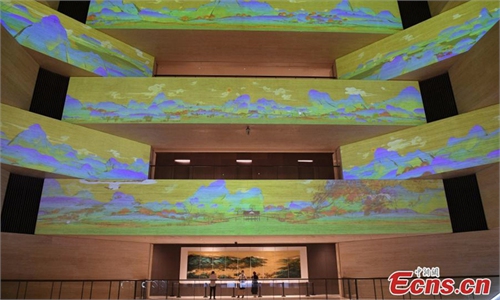ARTS / CULTURE & LEISURE
Yungang Grottoes' 3D printing tech offers a glimpse of green civilization
Digital rebirth
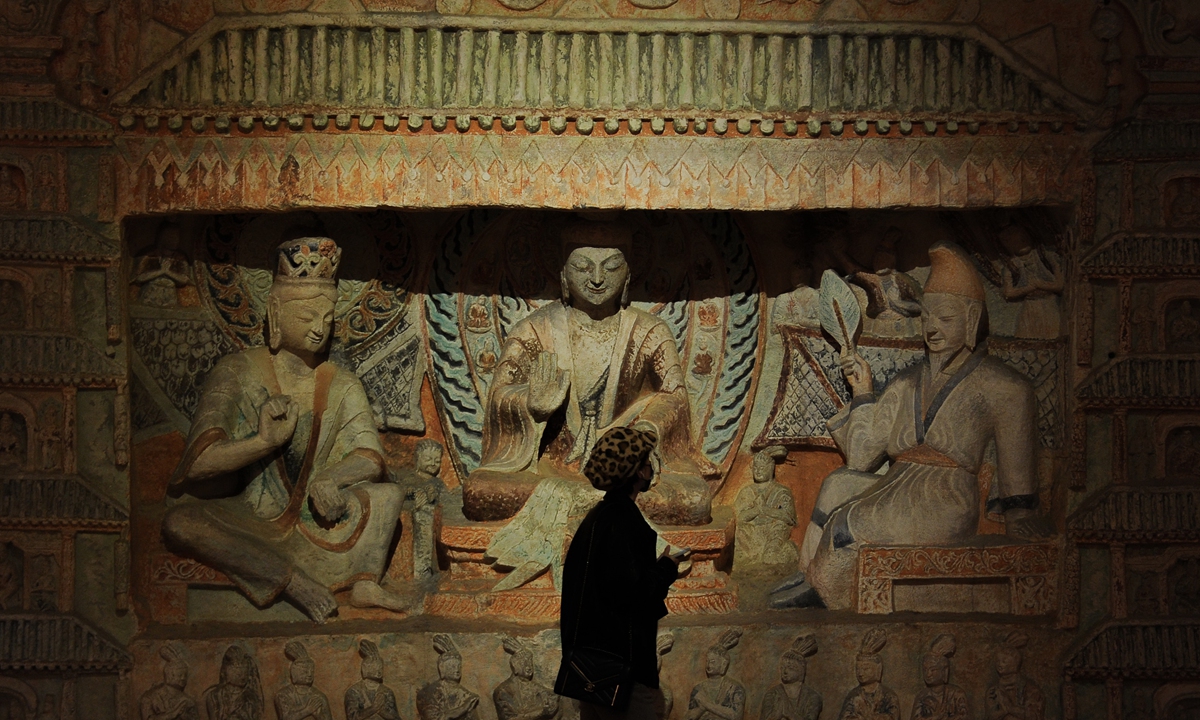
A viewer looks at a 3D replica of the Yungang Grottoes' No.6 cave. Photo: IC
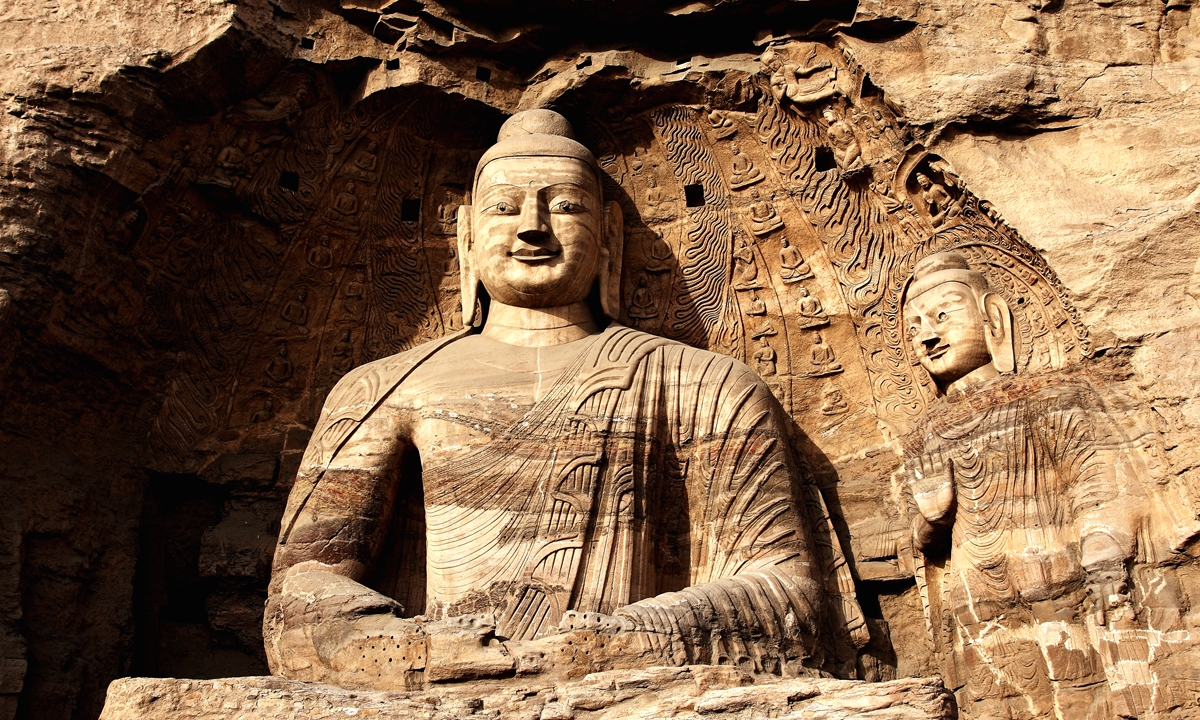
Buddhist statues at the Yungang Grottoes Photo: VCG
Editor's Note:Carrying the genes and spirit of a nation, cultural relics and heritages are irreplaceable resources for a thriving civilization. A huge number of Chinese relics have gotten more popular over the past 10 years and allowed people from around the world to get to know Chinese culture better. The Global Times will feature a number of these "star" artifacts in this series, to make cultural relics stored in museums, heritages displayed throughout the vast land and texts written in ancient books come alive.
As Chinese President Xi Jinping has said, Chinese civilization, together with the colorful civilizations of other countries, should provide mankind with proper spiritual guidance and a strong spiritual impetus.
The Yungang Grottoes were established by the order of an emperor of the Northern Wei Dynasty (386-534) to quell ethnic conflicts through the spread of Buddhism. They have welcomed dignitaries from more than 20 countries over the past decades.
In 2020, a digital exhibition focusing on the Yungang Grottoes, a treasure trove of Buddhist art in northern China, became a senstation among art lovers in Shanghai. The exhibition displayed more than 100 relics from the grottoes alongside artworks from contemporary artists inspired by the site. The most eye-catching exhibit was a 1-to-1 scale 3D printed replica that exactly reproduced the original appearance of one of the caves at the grottoes more than 1,600 kilometers away.
"After the Shanghai leg, the exhibition tour was shelved due to COVID-19," Ning Bo, head of the 3D printing technology team at the Yungang Grottoes, told the Global Times.
"But that's all temporary. In the following months, we plan to tour Jiangsu Province. Then we will continue our tour in Italy, Japan and other countries in the future."
Made up of eco-friendly detachable blocks, the model faces a long international journey by ship in eight large containers - no easy task considering the impact of the pandemic.
"And that's on top of the transnational curation and joint planning aspects of the exhibition," Ning added.
Despite more than 1,000 years of weathering, this light of human civilization is even more dazzling in the 21st century. Behind this are the efforts of scholars and the most advanced conservation techniques.
Bumpy road
Conservation of the site has been full of ups and downs due to frequent wars and the rapid industrial development China experienced during the second half of the 20th century. It was listed as a UNESCO World Heritage Site in 2001.
In 1973, in front of nearly 200 journalists from 24 countries, then Chinese premier Zhou Enlai announced the country's determination to protect and renovate the Yungang Grottoes while he was in Datong, Shanxi Province, to meet with then French president Georges Pompidou.
From 1974 to 1976, grottoes No.5 through No.20 were repaired and reinforced and a number of carvings were saved from the verge of collapse.
However, one major problem was a highway that thrust through the desert in front of the Yungang Grottoes.
According to staff at the Yungang Grottoes Research Academy, about 16,000 coal vehicles would pass by each day. The coal dust that scattered on the Buddha statues turned acidic in the rain, which has accelerated the weathering of the long-standing statues at the site.
In late 1990s, the specialized coal highway was relocated and coal trucks were forbidden from passing near the site. The original highway was transformed into a special line to welcome tourists, while the local government also relocated residents living near the grottoes to the outskirts of the site.
Virtual restoration
Considering the vast importance of the Yungang Grottoes in the history of human civilization, how to preserve this treasure trove and introduce it to the outside world became major questions for researchers.
For one solution, the staff at the Yungang Grottoes Research Academy cast their attention toward digitalization.
In 2014, the establishment of the Yungang Digital Center pushed the site into the "digital era."
The research team digitized the data they had collected after spending years in the caves, which allowed them to reproduce three grottoes (No.3, 12, and 18 to date) through 3D printing.
Among them, the team carried out high-fidelity 3D digital data collection inside cave No.12, known for its treasured Western and Eastern musical instruments.
The team used environmentally friendly degradable polylactic acid resin to print with, adding a layer of rock paint on the outside to simulate the texture of the walls of the grottoes and then another layer of fire-resistant paint as well.
"You can imagine the whole compound is a Lego-like model, with each Lego-like block more than two square meters. We used eight containers to put it together," Ning explained.
Besides presentation, Ning said that the value of current 3D printing technology is vast, especially when it comes to scientific research and preservation efforts.
For example, 3D laser scanning technology is used to monitor the weathering of the grottoes.
"We are like doctors, and the precious carvings on the surface of the grottoes are the patients. We work hard to treat them using physical and digital therapies that complement each other," added Ning.
